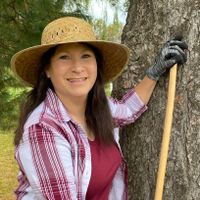How To Grow Even Bigger Tomatoes In Your Vegetable Garden


It's all about bragging rights! Perhaps you find growing big tomatoes a fun and challenging way to impress family and friends, but are you aware you could also win a prize by entering your biggest tomato in your county or state fair? If you grow a record breaking tomato, you could earn a Guinness World Records title.
How to Grow Giant Tomatoes
Currently, the Guinness record holder for growing the heaviest tomato goes to Del and Julie Faust, whose 11.65 pound (5.3 kg) tomato was verified by officials in October 2022. With a circumference of 32.5 inches (83 cm), growing a tomato this size takes special attention to details and quite a bit of dedication.
Whether you have your eye on the prize or simply want to enjoy brag-worthy tomatoes from the garden, the key to growing giant tomatoes starts with the right DNA. Varieties of beefsteak type tomatoes are a good place to start.
Beefsteak type varieties are considered the best large tomatoes to grow in the home garden. These varieties have meaty flesh with smaller seed cavities than other types. Most beefsteak tomatoes have a rich flavor, with some varieties tasting sweeter than others. Available in a range of mature fruit colors, several beefsteak varieties routinely produce 2 to 3 pound (1 kg) fruit in the home garden. These include:
- Big Rainbow
- Big Zac
- Dinner Plate
- Giant Belgium
- T&T Monster
Please note: You might not find these varieties at your local nursery or big box store. If you want to grow giant tomatoes, plan to start your own transplants from seeds obtained online.
How to Make Tomatoes Grow Bigger
Choosing the right variety of tomato is only part of the equation. To grow larger fruit, serious competitors strive to provide the most ideal tomato growing conditions possible:
- Start with organically rich soil. Record setting tomato growers often attribute their success to their garden soil. Working in grass, leaf, and manure compost not only raises the nutrient level of the soil, but also improves drainage and balances soil density.
- Pay attention to sun. Tomatoes prefer full sun. For the best growth and fruit production, choose an area of the garden where tomato plants will receive a minimum eight hours of direct sunlight per day.
- Provide proper spacing. Crowding tomato plants increases competition for needed resources, which can reduce fruit size. Space seedlings a minimum of 2 feet (60 cm) apart with 4 feet (1.2 m) between rows.
- Plant and water deeply. Bury approximately two thirds of the tomato plant in the ground when transplanting seedlings into the garden. Roots will develop along the buried stem, resulting in healthier plants. When needed, apply supplemental water around the base of the plant and water deeply to ensure all the roots are hydrated.
- Water when needed. Tomato plants are most productive when they receive between 1.5 and 2 inches (4-5 cm) of rain or supplemental water per week. (A rain gauge can help determine how much additional water to provide.) Once tomatoes start to ripen, reduce irrigation to concentrate flavor and prevent cracking.
- Feed wisely. Use a balanced 10-10-10 fertilizer early in the season to promote foliar growth and help tomato plants become established. Then switch to a lower nitrogen fertilizer such as 5-10-15 to encourage blossoming and fruit development.
- Mulch with plastic or straw. Mulch inhibits weeds from germinating, conserves soil moisture, and prevents splashing, which can spread diseases. Organic mulches will decompose and add nutrients to the garden.
- Provide support for plants. Using tomato cages or trellises keeps ripe tomatoes off the ground where they can be damaged by slugs, other insects, and hungry critters. Later in the season, panty hose slings can be attached to trellis uprights to support heavy fruit and prevent vine breakage.
Learning how to grow large tomatoes is not difficult, but successful competitors have one additional trick for growing award winning tomatoes. As the tomato plant begins producing fruit, each flower cluster is pruned to allow only the biggest or first fruit to develop. The plant then concentrates its energy on developing fewer, but bigger tomatoes.
Sign up for the Gardening Know How newsletter today and receive a free copy of our e-book "How to Grow Delicious Tomatoes".

Laura Miller has been gardening all her life. Holding a degree in Biology, Nutrition, and Agriculture, Laura's area of expertise is vegetables, herbs, and all things edible. She lives in Ohio.